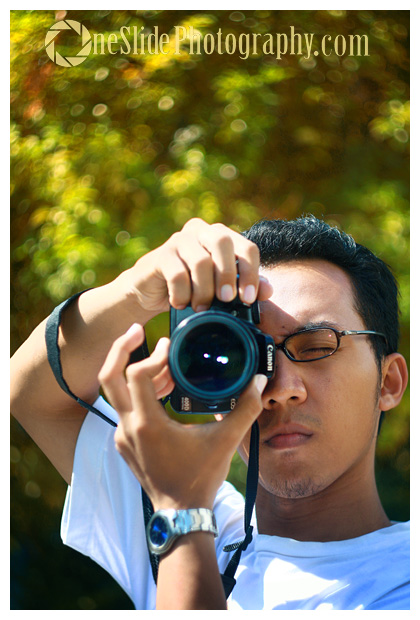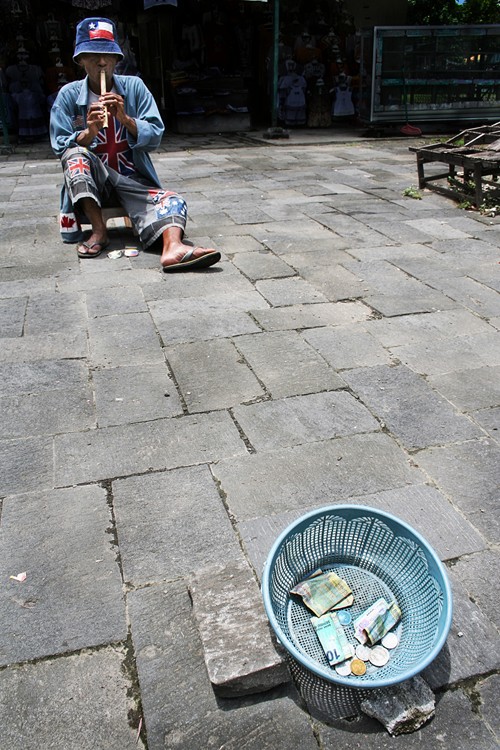
Here are 20 quick tips to get you started as a beginner photographer. Maybe you’ve known some of these, but hopefully you’ll learn something new.
1. To practice your panning skills, photograph objects moving at normal speeds (a person riding on a motorcycle, for instance). Use the shutter priority mode and set your shutter speed at a maximum of 1/30 second. The slower, the better.
2. For photographing macro (super close range), activate the Live View feature of your digital camera to ease the checking of depth of field and focus.
3. CPL (polarization) filters are very useful to eliminate reflection of sunlight on water and glass, and are also useful for improving sky color. Have you ever worn a pair sunglasses with a polarization filter layer? That’s about the gist of the effect.
4. When photographing babies or small children, make sure you focus on their eyes. Nothing beats the innocent beauty of a child’s eyes as the point of interest in the photograph.
5. Megapixels aren’t everything. The size of the sensor is a more important aspect of a camera.
6. For photographing outdoor portraits, try to photograph during rather cloudy weather. If not, try and find a shady area that isn’t under direct sunlight. Direct sunlight creates harsh shadows on the face.
7. When photographing in low-light conditions and your camera has trouble autofocusing, switch to manual focus. The autofocus feature usually takes quite a bit of time to find focus in low lighting.
8. For photographing silhouette, make sure that you turn off the flash when using the sunset mode (for pocket point-and-shoot cameras). As for DSLRs, use the manual mode and measure the exposure of the light areas behind the object.
9. Download the pdf version of your camera’s book manuals so you’ll be able to easily find any essential information that you’re looking for. It’s much easier than having to flip through an actual book. Look through this website for links to different DSLR types and brands.
10. Before starting a day of photo shoot, check your camera settings and make sure they are at the right setting for the conditions you’re about to photograph in (making sure the ISO isn’t at 1000 when photographing landscapes, for example). According to professional photographers, a good sequence of checklist is: check White balance, highlight activate warning, check ISO setting, then check the size of your image resolution.
11. Only format your memory card while it’s inserted in your camera. Don’t format your memory card in your computer. In addition to it being much faster and easier, it’s also safer if you do the formatting in the camera.
12. If you have excess capacity in your computer’s hard disk and like to edit your photographs digitally, use the RAW format while photographing. If not enough space would be available, use JPEG.
13. If you are really into landscape photography, photograph during the following times: from 5 to 8 AM, and between 4 and 7 PM in the evening. This is what in the world of photography is called the <Golden Hours>.
14. When photographing, pay attention to the brightest parts in the viewfinder. If the bright areas stand out too much, revise your shooting angle.
15. For photographing HDR (High Dynamic Range), use the auto bracket mode. And one more thing: for an extraordinary HDR landscape photograph, wait for it to get a little bit cloudy, then begin shooting.
16. If you’re thinking of purchasing used lens or camera, make sure you directly meet with the seller during the transaction. It’s crucial that you examine, hold, and try out the merchandise you are about to buy.
17. As long as it’s possible, use as low of an ISO setting as possible. Even though noise reduction feature lessens the visibility high-ISO noise, it’ll also decrease the details of the photograph.
18. If the surrounding colors make your photograph look too “busy,” change the settings to black and white.
19. To get great looking black and white photos, pay attention to the contrast in the photograph. The more the contrast (more variations of darks and lights), the better the black and white photograph will turn out.
20. Carry your camera wherever you go. The best way to improve your photography skills is by extending your practice hours. The more, the better. There’s no other better way to ensure the improvement of your photography skills.
















